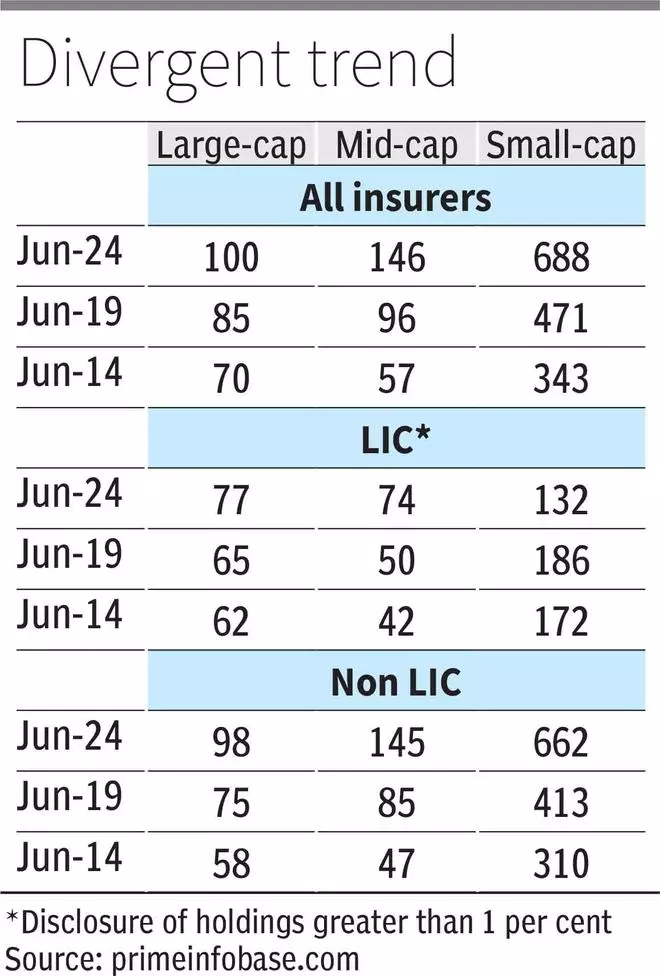The investment universe of insurance firms has widened over time.
Insurers were invested in 146 mid-cap and 688 small-cap companies at the end of June this year. This figure was 96 and 471, respectively, five years ago. This implies a 47 per cent jump in the number of such companies in insurers’ portfolios over five years.
Insurers were invested in 57 mid-cap and 343 small-cap companies at the end of June 2014. This means the number of such companies in their portfolios has grown by over 2x over the past decade.
“Some insurers have started to invest in equities more aggressively over the last few years. They compete to provide superior return to policyholders and in the process have started to look out for opportunities in the small and mid-cap space. Such stocks have beaten large-caps in terms of returns over the past few quarters,” said Deepak Jasani, Head-Research, HDFC Securities.

A part of the investment by the life insurers could also be a part of their treasury operations, where they can afford to take greater risks, with adequate safeguards in place, added Jasani.
“As the economy grows, many small companies have become large enough to get listed. The more interesting part is the variety of sectors they operate in. With structural tailwinds, some of these could grow much faster than their larger peers. So, investing in some of the smaller names may be a better long-term strategy than investing in large caps,” said Sanjeev Mohta, Vice-Chairman and CEO at B&K Group.
Bull market
Nifty has returned 129 per cent over the past five years compared with gains of 279 per cent and 254 per cent clocked by Nifty Midcap 100 and Nifty Smallcap 100.
“There have been several new listings over the past few years, especially from mid- and small-cap companies. A lot of domestic institutional investors invest in IPOs and the pool of such companies in insurers’ portfolios may have grown in line with that,” said Pranav Haldea, Managing Director, PRIME Database.
Over 240 IPOs have hit the market since 2019.
Selling of Unit Linked Insurance Plans (ULIPs) may have also played a part. The asset allocation in ULIPs varies, but typically about 75 per cent is invested in equities.
“A lot of private players focus on selling ULIPs, which invest in equities. These schemes are often sold like an investment product, thus making NAV and returns quite relevant. Such schemes could be going down the market capitalisation curve in search of alpha,” said an industry official.
LIC has been an outlier when it comes to investment in small-caps. The insurer has clipped its investments in small-caps to 132 from 186 five years ago. The insurer may have booked profits in some of the small-cap names or exited altogether, learning from past experience, said experts.
“We may continue to see high exposure by life insurers to the small- and mid-cap space till some of them get hurt in the next selldown. Although their investments are supposed to be long term in nature, they may invest in such stocks for the short term to earn alpha, generate better returns and attract more customers,” said Jasani.




Comments
Comments have to be in English, and in full sentences. They cannot be abusive or personal. Please abide by our community guidelines for posting your comments.
We have migrated to a new commenting platform. If you are already a registered user of TheHindu Businessline and logged in, you may continue to engage with our articles. If you do not have an account please register and login to post comments. Users can access their older comments by logging into their accounts on Vuukle.